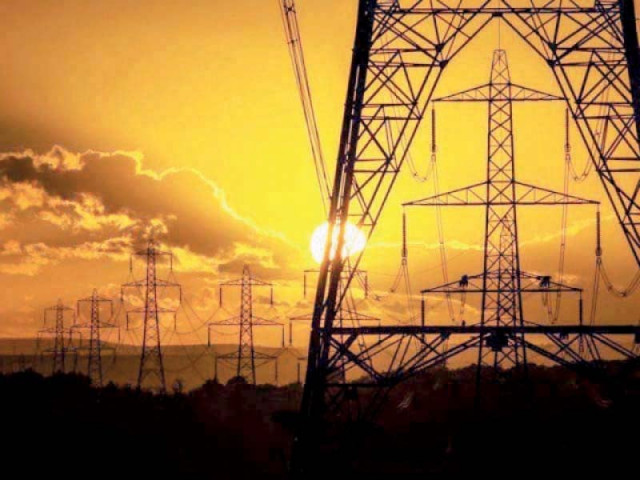New IGCEP for power capacity planning
External help from academia regarding expansion plan can also be sought

A new Indicative Generation Capacity Expansion Plan (IGCEP) has been submitted by the National Transmission and Despatch Company (NTDC) for the regulator’s approval.
There are some questionable recommendations made in the model that we will discuss in this space. Should we adopt the recommendations because a computer model has been used or we should apply our minds, analyse and evaluate it keeping in view some peculiarities?
Also, all models should be taken with a pinch of salt as there are many issues related to assumptions, methodologies and data accuracy.
On the other hand, there is a risk of arbitrariness in fiddling with the model. However, let us first praise the effort of NTDC professionals, who have prepared the IGCEP through their own efforts.
A weaker side of the IGCEP appears to be the demand-side modeling on which the authors have made similar submissions. While on the supply side, sufficient details have been given like the utilisation of Plexo software and others, there is a lack of transparency in demand modeling.
External help should have been sought from the academia where there is no dearth of qualified and experienced economists and econometricians. Even at this late stage, it may be desirable to have advice and input from the academia.
Out of a total of 25,263 megawatts of new capacity, candidate projects have only 2,183MW capacity and committed projects are of 23,080MW capacity. In the case of latter, IGCEP has no option to alter. What is the basis for these committed power plants?
Read more: No increase in electricity tariffs in future, says Tarin
The most startling point in the IGCEP is that there would be no use of re-gasified liquefied natural gas (RLNG) combined-cycle power plants (RLNGCCPP) by the year 2023, while one of these – Trimmu – has been approved recently.There may be exceptional cases like hydropower projects where long planning horizon is required. Perhaps, the IGCEP should start earlier to minimise the volume of committed projects.
On the other hand, other power plants running on gas with aggregate capacity of 5,278MW would keep working. It is a common knowledge that RLNGCCPP are much more efficient with efficiency of more than 60% while other plants have an efficiency of around 40%.
Let us trace as to why the model has given this outcome? An obvious reason appears to be that local gas is cheaper and RLNG is expensive. Due to this, an inefficient power plant working on cheaper gas would come higher in the merit order than a more efficient power plant working on expensive RLNG. However, running a power plant on RLNG or local gas is an arbitrary administrative decision.
A problem with the merit order based on fuel cost is that there is no filtering criterion for capital-intensive projects overburdening the cash flow. Some solution has to be found in this respect. And it eliminates efficient power plants (RLNGCCPP) due to fuel price anomalies.
Domestic sector
I would suggest the opposite that all power plants are run on RLNG, except where there may be technical or legal constraints such as low Btu local gas, etc. This can be done notionally but preferably actually.
Local gas should be reserved for residential, commercial and industrial use. It would be politically impossible for any government to use RLNG in the domestic sector and charge accordingly or provide a huge subsidy, keeping in view the low domestic gas tariff.
Thus, cheaper local gas would be saved for the most eligible domestic sector. Also, the price anomaly would be done away with, which is creating an unacceptable situation of shunning newly installed and more efficient RLNGCCPP and preferring older and less efficient power plants.
It appears that there is a need for further optimisation. For a demand of 32,000MW, a capacity of 52,000MW appears to be too much, although lower capacity factors of renewables and hydropower plants may be partly the reason for the large difference. Capacity payment and circular debt is a major issue facing the economy. An alternative combination of capacity may be simulated to see if the investment and generation costs can be lesser.
Also, demand management may be an issue and the plan also points out such issues.
Existing capacity is 34,000MW. It has been proposed to add 19,215MW over the next 10 years so as to have installed capacity of 53,100MW. This is not by utilising RLNG power plants of 5,839MW capacity.
It would be almost senseless to not utilise these plants, waste the investment and propose to add additional capacity, simply because the planners’ tools and methodology says so.
I am sure that if a due diligence is made of the proposed IGCEP, other opportunities to save capacity investments may be discovered.
Hydropower capacity of 23,035MW has been suggested to be installed by year 2030 as against the present installed capacity of 9,888MW, which means that a capacity of 13,147MW would be installed in the 2021-30 period.
The main question is that is it feasible to install such large hydropower capacity over the next 10 years. As against this, there would be a solar capacity of only 1,964MW and wind power capacity of 3,795MW.
This is a rather sensitive provincial issue. Hydropower is located in K-P, wind in Sindh and solar is everywhere. Solar energy costs have come down tremendously and should be more than 50% cheaper than hydropower.
Transmission lines
Also, long power transmission lines have to be laid to bring electricity to the demand centres. The new paradigm is distributed generation, ie produce near the consumption centres.
Hydropower has an advantage of water storage and hence it appears that large hydel projects with storage may be preferred. Solar capacity should be enhanced as opposed to the model’s recommendations.
Provincial allocations seem to be missing. Perhaps, the choice of the plant type would partly determine this or the availability of ready projects. It appears that Sindh has excess capacity with nuclear and coal power plants. Thar coal and wind power should receive priority. Otherwise, longer and expensive transmission capacity would be required. The model should be reviewed accordingly. Adoption of more solar can deal with this situation.
Finally, there are transmission issues due to which the merit order cannot be implemented strictly. Some efficient power plant cannot be run because of the lack of transmission capacity in certain segments and lesser efficient plants are used.
Another issue is the use of residual fuel oil (RFO), which has been recommended to be discontinued and is already disallowed in some way.
RFO is being produced as a co-product with gasoline and diesel. If RFO is not used by power plants and thus not produced by oil refineries, gasoline and diesel production would have to be reduced. Oil refineries are already complaining of heavy losses.
Another factor that is emerging is that most RFO power plants have no capacity payments to be made. And thirdly, RLNG and RFO prices are coming closer. Times change fascinatingly. RFO was a taboo and RLNG was a new comer. Now, the model is rejecting RLNG power plants and we are talking of the merits of RFO.
The writer is former member energy of the Planning Commission and author of several books on the energy sector
Published in The Express Tribune, June 7th, 2021.
Like Business on Facebook, follow @TribuneBiz on Twitter to stay informed and join in the conversation.



















COMMENTS
Comments are moderated and generally will be posted if they are on-topic and not abusive.
For more information, please see our Comments FAQ